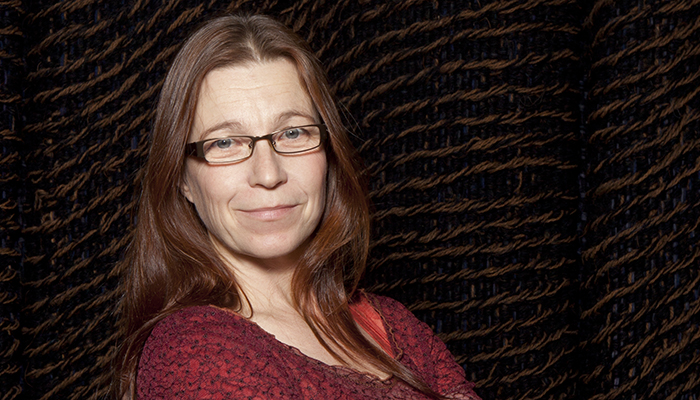From class teacher to a creativity researcher
Professor Maarit Mäkelä is passionate about her work; hands deep in clay.

Professor Maarit Mäkelä, what do you research and why?
My aim is to establish what the creative process is all about. Traditionally, the topic has been examined from outside the process, but I am interested, in particular, with the creator's knowledge. I head the Empirica research group at the Department of Design, the members of which are artistically, designerly and culturally oriented researchers, who approach the topic from the perspective of their own creative work.
I approach the topic from the perspective of the creator’s experiential knowledge. The core of my research is the creator's knowledge and experience, which are then supplemented and attached to a larger context through other research and data. My own creative practice is very much present all the times. As I am a ceramist, I am used to working with my body using raw materials from nature; a tangible material is very important to me.
How did you become a researcher?
As a child, I dreamt of becoming an artist and, when in grade 1 I fell in love with my teacher, I also wanted to become a teacher. When completing my Master's degree in Education, I specialised in teaching handicrafts and art. The creative process interested me already at that point, and I enrolled in every possible art-related course. When I then fell crazy in love with ceramics, my hunger only grew; I left my tenure as a class teacher and came here for a new start.
When I was a teacher, I understood something of the creative process, but I was now able to immerse myself in it. I was interested overall how the process works; how it progresses as a dialogue of doing and thinking or more so as a melding of the two into one way of thinking, which is now also referred to as embodied knowing. I dreamt of a career as an artist, but once I had completed my Master's degree, the Aalto offered the opportunity to conduct a dissertation based on one's own artistic or productive process for the first time ever. No one had done so yet, so I knew that the future would be a leap into the unknown. Nonetheless, I grabbed the opportunity, because I knew that if I survived it could be a phenomenal.
What have been the highlights of your career?
Without a doubt, one highlight has been the completion of my Doctoral dissertation. It was a wonderful moment when everyone got to hold the book, noted that it was good and, at the same time, finally understood what I had worked so hard on for the past eight years.
A second highlight has been our first academic funding, which required a great deal of networking and searching for partners. This Mind application also resulted in four years of funding for my postgraduate student, who just defended her dissertation in February. Her dissertation Making sense through hands is an excellent example of how in the right context and the company of the right people can allow a researcher get past their own thinking to the next level. We have partnered with people such as Pirita Seitamaa-Hakkarainen, a professor of Craft Studies at the University of Helsinki and Minna Huotilainen, a research professor at the Finnish Institute of Occupational Health and a brain researcher.
The third ground-breaking experience I had was the year I spent abroad as part of the tenure track requirements. In New Zealand, I found my inner ceramist again as well as many like-minded colleagues, who influence artistic research through their own work, thinking and writing driven by love, passion and desire. I took a giant leap as an artist, and I still draw belief and strength from that year.
What are the most important qualities for a researcher?
A researcher must recognise her own passions and, at times, be a tough negotiator and be able to firmly argument her case, so that she can hold on to this when faced with sceptics. Persistence and stubbornness are important traits, but, at the same time, researchers must be open to new things and be prepared to examine what is happening around them.
What are your expectations for the future?
I hope that in addition to everything else, I can maintain my own artistic work. Then again, I share my expertise related to creating in various ways on a daily basis, such as when I help my Master's students and Doctoral candidates.
I also want to hold on to my own niche, where I dare to be outrageously brave - to do something that can, at best, lead to unbelievable insights and cooperation opportunities and, at worst, fall flat. I would also like to outline my own key tasks so that I am able and have the discipline to realise the core concept of my professorship in these, which I feel is not yet knowing and not quite knowing.
Maarit Mäkelä and the other recently tenured professors at Aalto University will present their research in the multidisciplinary afternoon starting at 14.15 on 15 March. We hope to see you there!
See the lecture programme here


